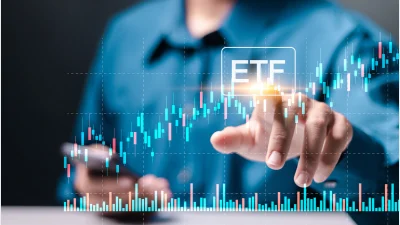Active ETFs set to outpace passive listings



Australia is driving the way in active ETFs, according to Trackinsight, and listings could outpace those of passive ones by FY26.
The firm’s Global ETF Survey described how regulation around active and passive ETFs has seen active ETFs make up over a third of all ETF listings in Australia and over 15 per cent of total industry assets.
It noted research by JP Morgan Asset Management (JPMAM) which found active ETFs in Australia have recorded a compound annual growth rate of around 53 per cent in assets under management which is more than double the 27 per cent over the same period for passive products.
Commenting, Andrew Campion, general manager of investment products at the ASX, said he expects active ETF listings will outpace those of passive ones in Australia by FY26.
“By FY26, Australia will see more new active ETF listings than index-tracking ETFs for the first time,” he predicted.
Overall, active ETFs now represent 27 per cent of global listings and attracted US$352 billion in 2024 which represents 22 per cent of total flows.
Campion particularly noted the rise of fixed income ETFs and forecast fixed income will be the fastest-growing ETF asset class by inflow share in the Australian market.
In Australia, Betashares recently launched a range of three defined income corporate bond ETFs, each with a different maturity date, while PIMCO added four active fixed income ETFs to its range in February.
Globally, Trackinsight found most investors maintain moderate exposure to fixed income ETFs, with allocations typically below 30 per cent of their portfolio. Passive strategies still dominate, but one-third of respondents now prefer active management for bonds.
A strong majority also plan to expand their exposure to actively managed bond ETFs, signalling increasing confidence in active fixed income strategies.
However, while active ETF listings are popular with fund managers, research by EY found that investors are favouring those passive ETFs with extremely low fees. Two-thirds of industry flows during the first quarter of 2025 went into 90 passive funds which had an expense ratio of 0–25 bps.
EY noted this figure is cheap even for passive ETFs with a larger proportion of passive products (110) being concentrated in the higher fee band of 26–50 bps.
“Intense and longstanding fee pressures have forced players to control expense ratios which decreased to 0.33 per cent in the March 2025 quarter. The weighted expense ratio for active funds (124 ETFs) were 0.73 per cent, while passive funds (251 ETFs) had a ratio of 0.24 per cent in the March 2025 quarter.”
Recommended for you
Magellan fund manager Arvid Streimann has resigned after an investigation into allegations he had a workplace relationship with a junior employee.
Clime Investment Management has sold a portion of its retail client book to an external financial planning practice for $1.6 million in its latest cost-out move.
In his inaugural address as L1 Group chief executive, Julian Russell has outlined his vision and priorities for the newly-merged $16.7 billion business but warned fund outflows will continue for 18 months.
Ten Cap has announced it will launch its first active ETF on the ASX later this month, expanding retail access to its flagship Australian equities strategy.












